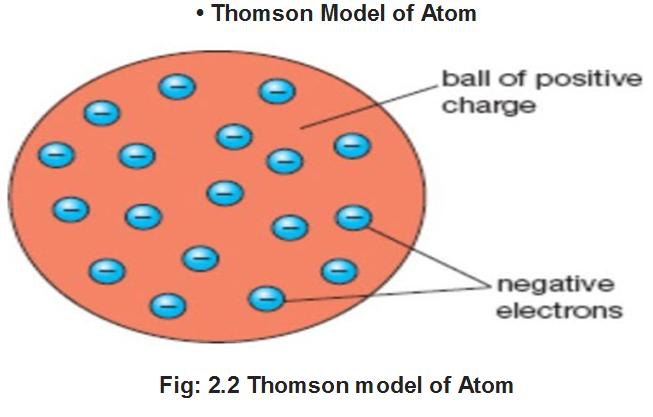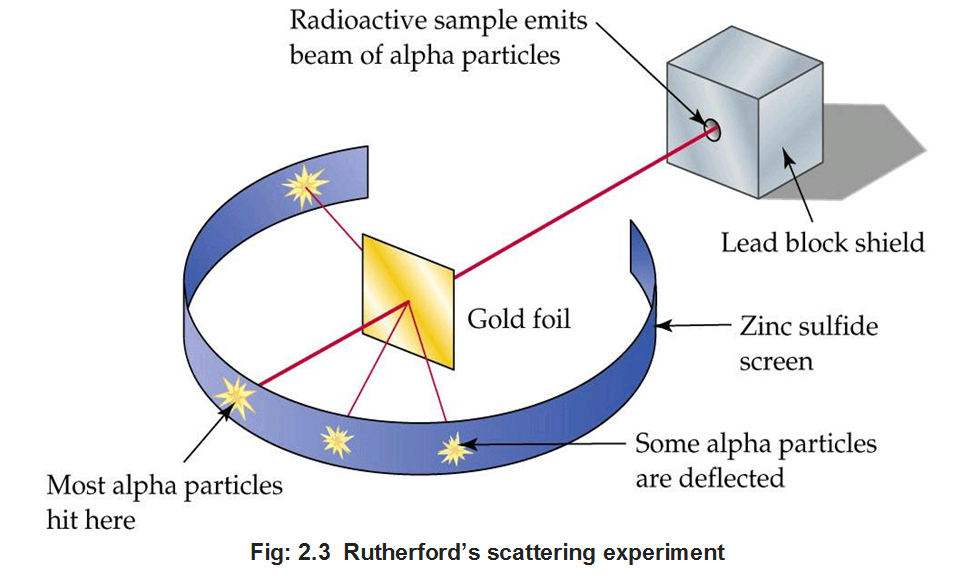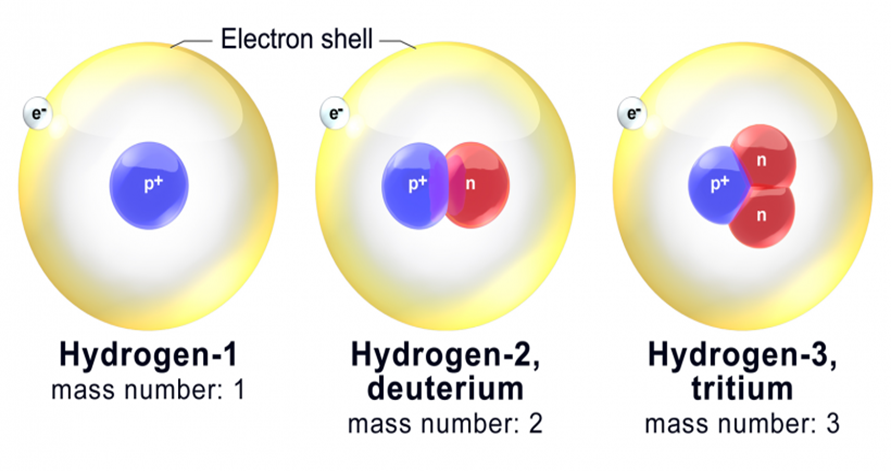- Books Name
- Ritan Sheth Chemistry Book
- Publication
- Ritan Sheth
- Course
- CBSE Class 11
- Subject
- Chemistry
ATOMIC MODELS

(i) J. J. Thomson proposed that an atom may be regarded as a sphere of approximate radius 1CT8 cm carrying positive charge due to protons and in which negatively charged electrons are embedded.
(ii) In this model, the atom is visualized as a pudding or cake of positive charge with electrons embedded into it.
(iii) The mass of atom is considered to be evenly spread over the atom according to this model.
Drawback of Thomson Model of Atom This model was able to explain the overall neutrality of the atom, it could not satisfactorily, explain the results of scattering experiments carried out by Rutherford in 1911.
• Rutherford’s a-particle Scattering Experiment
Rutherford in 1911, performed some scattering experiments in which he bombarded thin foils of metals like gold, silver, platinum or copper with a beam of fast moving a-particles. The thin gold foil had a circular fluorescent zinc sulphide screen around it. Whenever a-particles struck the screen, a tiny flash of light was produced at that point.
From these experiments, he made the following observations:

(i) Most of the a-particles passed through the foil without undergoing any deflection,
(ii) A few a-particles underwent deflection through small angles.
(iii) Very few mere deflected back i.e., through an angle of nearly 180°.
From these observations, Rutherford drew the following conclusions:
(i) Since most of the a-particles passed through the foil without undergoing any deflection, there must be sufficient empty space within the atom.
(ii) A small fraction of a-particles was deflected by small angles. The positive charge has to be concentrated in a very small volume that repelled and deflected a few positively charged a-particles. This very small portion of the atom was called nucleus.
(iii) The volume of nucleus is very small as compared to total volume of atom.
• Rutherford’s Nuclear Model of an Atom
(i) The positive charge and most of the mass of the atom was densely concentrated in an extremely small region. This very small portion of the atom was called nucleus by Rutherford.
(ii) The nucleus is surrounded by electrons that move around the nucleus with a very high speed in circular paths called orbits.
(iii) Electrons and nucleus are held together by electrostatic forces of attraction.
• Atomic Number
The number of protons present in the nucleus is equal to the atomic number (z). For example, the number of protons in the hydrogen nucleus is 1, in sodium atom it is 11, therefore, their atomic numbers are 1 and 11. In order to keep the electrical neutrality, the number of electrons in an atom is equal to the number of protons (atomic number, z). For example, number of electrons in hydrogen atom and sodium atom are 1 and 11 respectively.
Atomic Number (z) = Number of protons in the nucleus of an atom.
= Number of electrons in a neutral atom.
• Mass Number
Number of protons and neutrons present in the nucleus are collectively known as nucleons. The total number of nucleons is termed as mass number (A) of the atom.
Mass Number (A) = Number of protons (p) + Number of neutrons (n).
• Isotopes
Atoms with identical atomic number but different atomic mass number are known as Isotopes.
Isotopes of Hydrogen:

These three isotopes are shown in the figure below:

Isotope of Chlorine:
There are two isotope of chlorine with mass numbers 35 and 37.

The two isotope differ in their number of neutron having 18 and 20 neutrons respectively.
Isotope of some common elements

Characteristics of Isotopes
(i) Since the isotopes of an element have the same atomic number, but different mass number, the nuclei of isotopes contain the same number of protons, but different number of neutrons.
(ii) Since, the isotopes differ in their atomic masses, all the properties of the isotopes depending upon the mass are different.
(iii) Since, the chemical properties are mainly determined by the number of protons in the nucleus, and the number of electrons in the atom, the different isotopes of an element exhibit similar chemical properties For example, all the isotopes of carbon on burning give carbon dioxide.
• Isobars

• Drawbacks of Rutherford Model
(i) When a body is moving in an orbit, it achieves acceleration. Thus, an electron moving around nucleus in an orbit is under acceleration.
According to Maxwell’s electromagnetic theory, charged particles when accelerated must emit electromagnetic radiations. Therefore, an electron in an orbit will emit radiations, the energy carried by radiation comes from electronic motion. Its path will become closer to nucleus and ultimately should spiral into nucleus within . 10-8 s. But actually this does not happen.
Thus, Rutherford’s model cannot explain the stability of atom if the motion of electrons is described on the basis of classical mechanics and electromagnetic theory.
(ii) Rutherford’s model does not give any idea about distribution of electrons around the nucleus and about their energies.

 Ritan Sheth
Ritan Sheth
